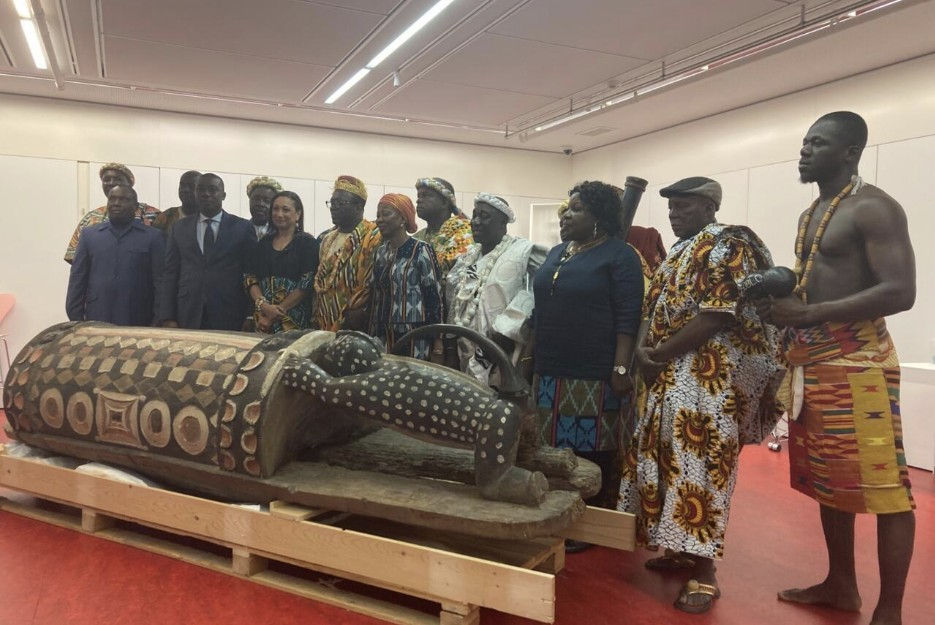Australia's Emerald Crown: The Wet Tropics of Queensland and the Secrets of UNESCO World Heritage
- Ishita Gupta
- Jun 18, 2024
- 3 min read
The UNESCO World Heritage Convention 1972 is an international treaty we are all aware of. However, what makes a natural place of enough import to grace the World Heritage List? Further, what is it then that makes Australia home to the most natural World Heritage sites than any other country?
To answer this we must first have a closer look at the World Heritage Criteria in respect to arguably Australia’s crowning emerald, a lush rainforest incomparable to any other: the Wet Tropics of Queensland.
Now, these Wet Tropics span 450 km of rainforest, mangroves and gorges along the northeast coast of Australia and are of unparalleled value to ecological and evolutionary processes. The Daintree Rainforest, a significant part of these wet tropics, contains living relics of the Gondwana era and the diversification henceforth has shaped Australia’s identity on the world stage as the nation with the most unique living beings albeit a number of dangerous ones.
The first criteria is exceptional natural beauty. The sweeping forests, untamable rivers, roaring waterfalls, and magnificent coastal scenery with carved mangroves fringing pristine white beaches. The wet tropics are a living, breathing mosaic unique to Australia.
The second and third criteria of being an outstanding example of Earth’s history includes significant on-going geological processes and aiding the development of the terrain: this is one I have already boasted about. As the most complete living record of major stages in the evolution of flora and fauna from more than 200 million years ago and a predominant forest covering Gondwana’s Australia and Antarctica has been preserved inside the very depths of the wet tropics to today. It is the closest counterpart to those ancient rainforests than any other today. It holds the key to the diverse and unique Australian animals, a secret when one learns of, we understand why Australia holds the most dangerous, venomous animals. As our territory comes largely from the area near Antarctica when we were a part of Gondwana, during major stages of evolution, energy was scarce and so evolution hurtled Australian evolution to means of killing without massive expenditures such as chasing and hunting. Instead we have the most poisonous, sophisticated killers on the planet in the forms of snakes, spiders with webs as big as houses, jellyfish, and even plants which look harmless to the eyes but even a brush engraves glass like barbs deep within the skin that causes pain for years.
That is still not to say that we don’t have some of the most dangerous hunters on the planet, with saltwater crocodiles claiming most of the wet tropics coastal scenery. Horror stories prevail when tourists have jumped in to enjoy a refreshing swim against locals advice and been tousled and halved in the jaws of these predators. Sadly the story doesn’t end well for either man or crocodile with the animal being hunted down after the fact. Along with the box and Irukandji jellyfish in the waters around North Queensland, swimming on the beaches in the wet tropics is not safe; it is a kind of deadly beauty set firmly in a rugged habitat with animals in the scene.
The fourth and final criteria is to contain the most significant natural habitats for the conservation of threatened and unique species. This is satisfied by the most important part of these Wet Tropics where the vastness and denseness of forests that allow deep within them where human touch has never reached areas where life from the Gondwana era has been preserved as is. These areas, called flowering trees, are from which the rest of the forest has taken birth, it is the oldest part of the world and is of great scientific interest, fundamental to the preservation of ancient ecological processes. Other emblematic species include the Australian Cassowary Bird that is one of the largest birds in the world and often spotted in the thicket of Daintree.
The Wet Tropics of Queensland encapsulate Australia’s pride and identity as an unmatched trove of life that is in global interest to preserve. As a World Heritage Site, there are increased tourist visitations to support local communities, employment opportunities, more support for the First Nations people and better management and protection of the area. With the most UNESCO World Heritage Sites in the world, Australia’s natural places are of internationally acknowledged importance and we must work towards the continual conservation of all these areas.






Comments